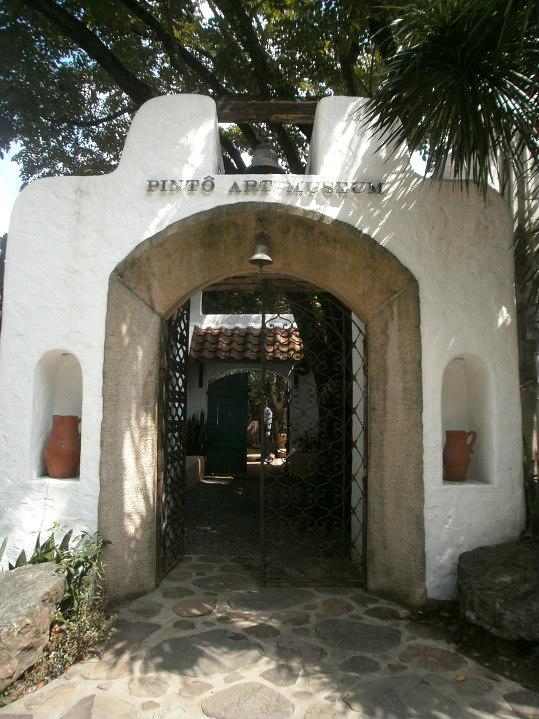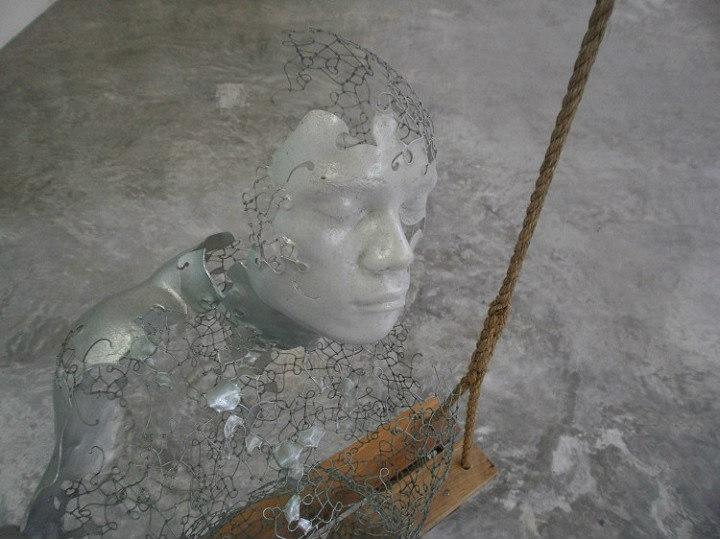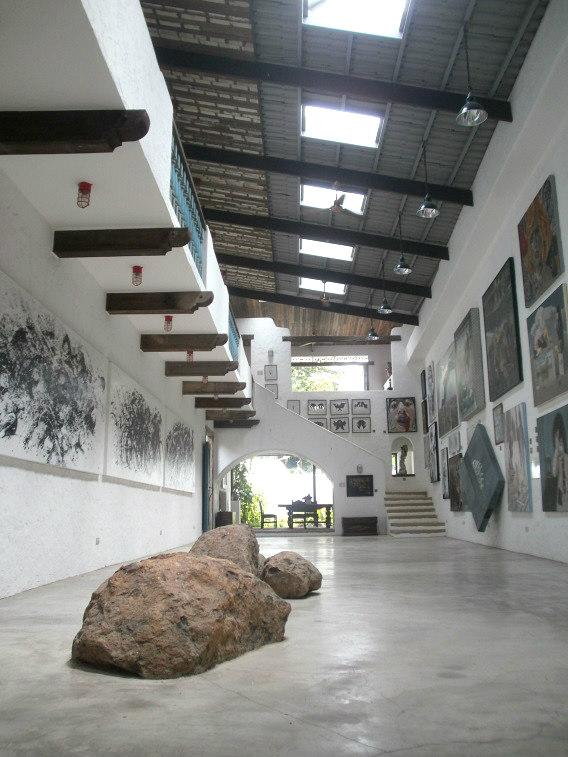Filtered By: Lifestyle
Lifestyle
Filipino culture and contemporary society at the Pinto Art Museum
Text and photos by SHEEN IRERICK SEECKTS
It was an uphill road from L. Sumulong Memorial Circle in Antipolo City. The elevation was steep and the vehicle’s accelerator needed to work twice as hard. But all the effort was worth it as I finally reached the guard house of Grand Heights Subdivision. And just around the corner, along Sierra Madre Street, there was the great white portal, bearing the name Pinto Art Museum.
The metal gate was left open, as if teasing me to get past the short passageway behind it. And soon enough, with just P180, I found myself introduced to a variety of doors, all partially opened, allowing me to have a glimpse of what was inside.

The entrance to the Pinto Art Museum in Antipolo
I took the entryway that led me to an outdoor staircase leading down to a garden, where there were artworks including a cow sculpture by Plet Bolipata.
Upon my last step, I found another door. I did not need to be completely inside the room to see "Karnabal" (1992), a 12'x40' acrylic mural by 16-artist collective Salingpusa.
At this carnival are Darna, who seems to be dancing around a pole; soldiers targeting dolls in a shooting booth; a Christ-like magician elevating a woman from the ground; red papier-mache carabaos; and a harlequin sitting in a confessional across from a priest.
According to Salingpusa member Andy Orencio, who also acted as tour guide, "Karnabal" is a creative embodiment of Philippine society after the Marcos era—and maybe even up until the present.

The figures at the center of 'Karnabal': the Christ, the priest, the clown, the dog and the carabaos.
“Is this a manifestation of our belief, or just a façade?” said Orencio, on how the harlequin represents Filipinos' absorption of Christianity.
Artist Geraldine Javier created "Holy on Sundays" in 1990. This work depicts a veiled woman with a rosary behind burning bars. The piece asks if Filipinos are only "holy" on Sundays.
According to Orencio, pieces like these showcase Filipino society’s declining morals and values, as depicted by the sinking black church in Costantino Zicarelli’s work, “We are here together forever until the world will be on the verge of sorrow.”

The sinking church of Costantino Zicarelli's 'We are here together forever until the world will be on the verge of sorrow'
In "Karnabal," near the priest-confessing clown is a mad, almost monstrous, dog. According to Orencio, a dog is a symbol of loyalty: if it becomes confused as to who its real master is, it could go insane. From this, another pathway opened in front of me: with God, money and power taking over society, in which should we place our faith?
Salingpusa sub-group Sanggaw created the piece "Kasal sa Hatinggabi" ("Wedding at Midnight: The Church and the State") in 1995. It shows a gun and a knife in the hands of the politician and the priest hugging each other.
"Alab, Bala, Babala" by Mark Justiniani features three revolutionary figures: Andres Bonifacio (alab) for his passion and aggression during the Spanish occupation; Jose Rizal (bala), for his execution by firing squad; and Emilio Aguinaldo, signified by the word "babala" as if emphasizing his alleged disloyalty.

Alab Pagarigan's 'The Hollow Man'
Then there was Thomas Daquioag’s "Magnet," featuring Darna once again, this time unable to fly and save people from a flood because of all the western debris attached to her body, including a Marilyn Monroe figure, a Minnie Mouse doll and a laptop. Daquioag definitely wants it to portray our colonial mentality and our overwhelming consumerist thinking.
Alab Pagarigan’s wire and resin installation "The Hollow Man" features an empty man, sitting on a swing. According to the artist's statement next to it, the piece is “nothing but a suggestion of probable continuity,” that tells us it is “only the perceiving mind that makes sense of what is otherwise, senseless and without solidity.”

Pinto Art Museum's Gallery 5
As I was led to the museum's exit, I pondered the weight that these Filipino contemporary artworks carry. The museum's owner, Dr. Joven Cuanang, surely had something in mind when he decided to share his vast art collection with the public. “Doc is actually having a statement of his own,” said Orencio as the tour approached its end.
On our way out, we passed by Zicarelli’s plummeting church once again. “But as we can see, the church is still sinking, and is not sunk yet, so we can still do something about it,” said Orencio.
I finally reached the great white portal once again. The metal gate was still open, as if telling me not to close it as I took my exit. Maybe it was also Dr. Cuanang’s idea to leave it open all the time, so people could freely enter and exit as Filipinos with a deeper understanding of our own society. — BM, GMA News
The Pinto Art Museum (697-1015) is at 1 Sierra Madre St., Grand Heights Subdivision, Antipolo. It is open Tuesdays to Sundays, 9 a.m. to 6 p.m. Tickets are P180 for regular visitors. Senior citizens and persons with disability with valid IDs can get in for P150, while students with valid IDs pay only P100 each. Children 3 years old and below can get in for free.
Tags: pintoartmuseum, museums
More Videos
Most Popular



